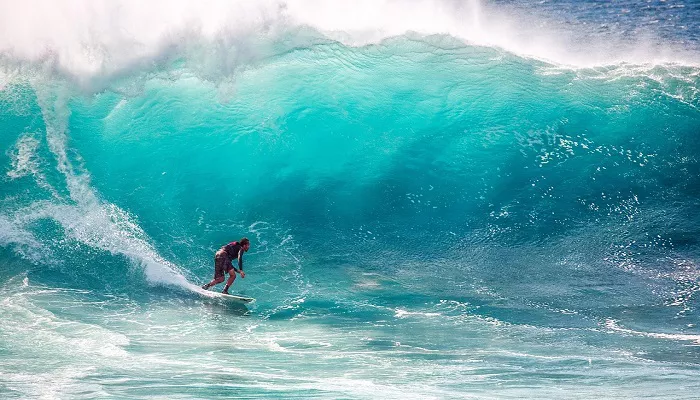Surfing is more than just a sport—it’s a cultural phenomenon, a way of life, and a connection to the ocean that spans centuries. But who were the first people to ride the waves? The origins of surfing are deeply rooted in ancient traditions, where it served as both a recreational activity and a spiritual practice. Unlike modern surfing, which is often associated with beach culture and competitive sports, early wave-riding was embedded in the social and religious customs of coastal communities.The question of who started surfing leads us to the indigenous peoples of the Pacific, particularly Polynesia, where the earliest evidence of surfing has been found. However, some theories suggest that even earlier civilizations may have engaged in similar practices. By examining historical records, oral traditions, and archaeological findings, we can trace the evolution of surfing from its ceremonial beginnings to the global sport it is today.
The Polynesian Pioneers: The First True Surfers
Early Evidence in Polynesian Culture
The most widely accepted origin of surfing lies in Polynesia, where the art of wave-riding was not just a pastime but an integral part of society. The earliest written accounts come from European explorers who witnessed Polynesians, particularly in Hawaii, riding wooden planks on waves. Captain James Cook, in 1778, described Hawaiian natives skillfully maneuvering on surfboards, which they called “papa he’e nalu” (wave-sliding boards).
Spiritual and Social Significance
Surfing in ancient Polynesia was deeply tied to religion and social hierarchy. Chiefs and warriors often demonstrated their prowess by riding the largest waves, while commoners used smaller boards. Rituals and chants were performed to bless the surfboards and ask the gods for good waves. The sport was so revered that certain breaks were reserved for royalty, and breaking these rules could result in severe punishment.
Materials and Techniques
Early surfboards were crafted from local woods like koa, ulu, and wiliwili. These boards were heavy, often reaching lengths of 15 feet or more, and required great strength to maneuver. Unlike today’s lightweight fiberglass boards, traditional Polynesian surfboards were solid wood, shaped with stone tools and finished with natural oils for water resistance.
Pre-Polynesian Wave Riding: Did Others Surf Before?
Possible Peruvian Origins
Some historians argue that surfing may have existed even earlier in pre-Columbian Peru. The Moche people, who lived along the northern coast of Peru around 200-800 AD, used small reed boats called “caballitos de totora” for fishing. These boats, made from bundled reeds, were ridden back to shore on waves, suggesting a form of wave-riding. However, whether this qualifies as true surfing remains debated, as it was primarily a practical fishing method rather than a sport.
West African Traditions
Another theory points to West Africa, where locals in countries like Senegal and Ghana have long practiced a form of wave-riding using wooden planks. The “Ghanaian surf fishing” technique involves fishermen paddling out on boards and riding waves back to shore with their catch. While not identical to modern surfing, these traditions indicate that wave manipulation was independently developed in different coastal cultures.
The Evolution of Surfing: From Ritual to Global Sport
The Decline and Revival in Hawaii
With the arrival of European missionaries in the 19th century, surfing faced suppression due to its association with indigenous religion and “idle” pastimes. By the late 1800s, the practice had nearly disappeared in many parts of Polynesia. However, a revival began in the early 20th century, led by Hawaiian surfers like Duke Kahanamoku, who popularized the sport worldwide.
The Birth of Modern Surfing
The transition from traditional wooden boards to lighter materials in the 20th century revolutionized surfing. Innovations like fiberglass and foam cores allowed for greater maneuverability, leading to the development of modern shortboards and high-performance surfing. The sport spread rapidly, becoming a symbol of counterculture in the 1960s before evolving into the professional industry we know today.
Conclusion
The question of who started surfing reveals a rich history that extends far beyond modern beach culture. The Polynesians, with their deep spiritual connection to the ocean, were undoubtedly the first true surfers, but evidence suggests that other cultures may have independently discovered the joy of riding waves. Whether for fishing, competition, or worship, the act of harnessing the ocean’s power has always been a testament to human ingenuity and reverence for nature.Today, as millions of people surf across the globe, they unknowingly participate in a tradition that dates back centuries. The next time you paddle out, remember that you’re not just catching a wave—you’re continuing a legacy that began with the fearless wave-riders of ancient Polynesia. Surfing is more than a sport; it’s a timeless dance between humans and the sea, one that has endured through generations and will continue as long as there are waves to ride.
Related topics
- HOW TO RIDE A SHORTBOARD SURFING?
- HOW TO DO SHIELD SURFING TRICKS?
- HOW TO DO A 360 WAKE SURFING: A STEP-BY-STEP GUIDE

